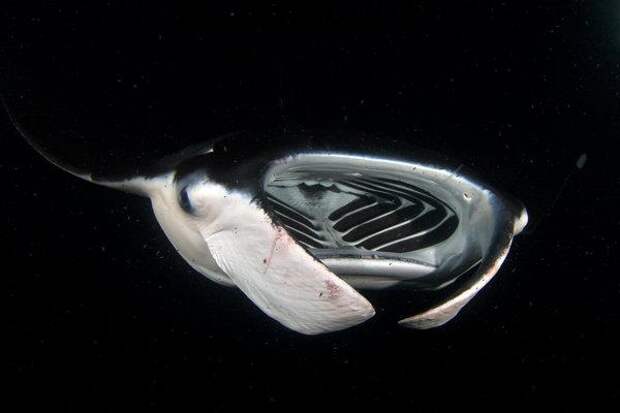Author: Veronique Greenwood / Source: New York Times

It all began with a simple question: Why don’t manta rays clear their throats?
The car-size, kite-shaped fishes filter their plankton food from seawater, but they don’t pause, close their mouths and snort clogs from their filters nearly as often as you would expect, according to Misty Paig-Tran, a marine biologist and a professor at California State University, Fullerton.
If their filters work like sieves, then they must get clogged over time, like all similar systems, from vacuum cleaners to your water-filter pitcher.But Dr. Paig-Tran and her colleagues’ latest research, published Wednesday in Science Advances, shows that the manta ray is using a previously unknown method of filtration that causes particles to glide over its straining system, rather than go through it. It doesn’t need to clear its filters much because they’re rarely clogged.
To understand how the manta’s filters work, imagine a series of tiny angled slats lined up in its mouth. When seawater rushes over these structures, according to experiments by Raj Divi, a student in Dr. Paig-Tran’s lab, it forms whirlpools between each pair of slats. These vortices don’t suck particles down. Instead they push up, keeping the fragments of plankton and other seaborne particles from falling into the crevices.
As a result the particles ricochet off the slats, growing concentrated in the mouth while the water drains away. They never actually get in the filter, according to both lab experiments washing colored dye and particles over plastic…
The post The Marvelous Filters in the Manta Ray’s Mouth appeared first on FeedBox.